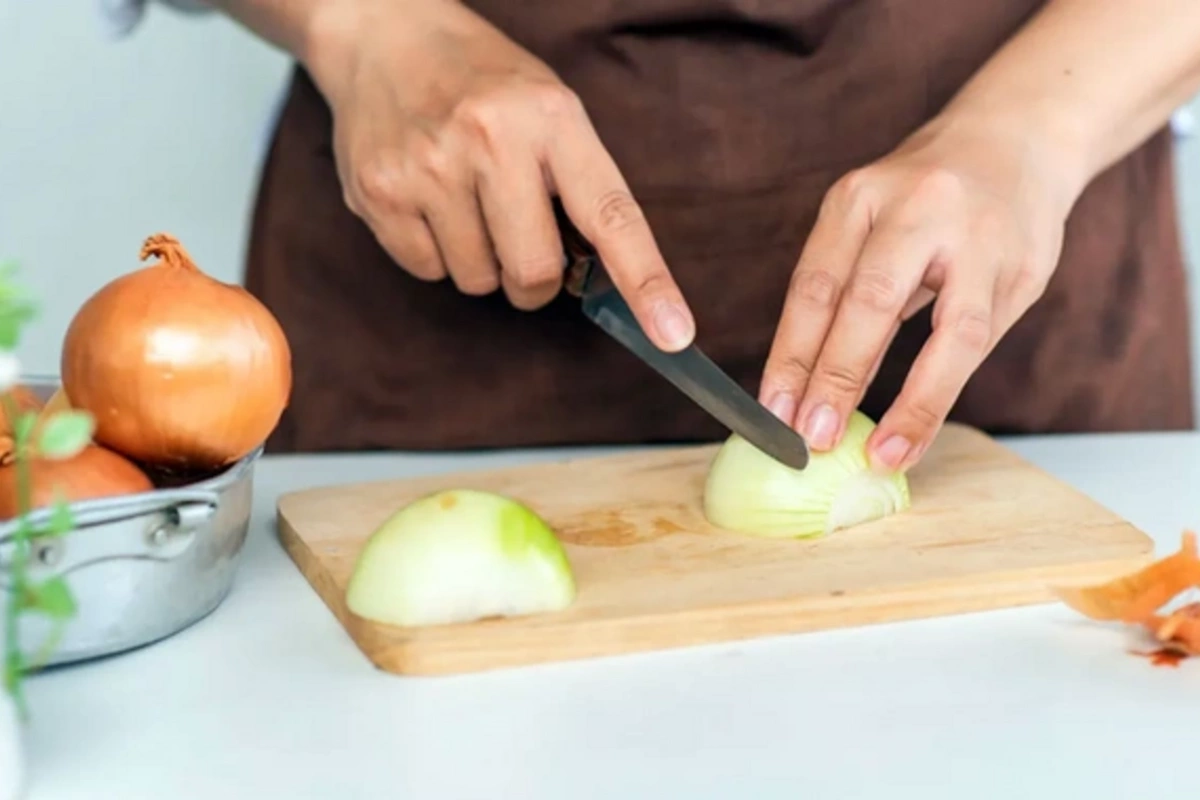16 May , 14:32
0

Scientists revealed the secret of cutting onions without tears: results of an unexpected study by American physicists
When cutting an onion, a whole complex of sulfur-containing compounds is released into the air, among which syn-propanethiol-S-oxide plays a special role — a lachrymatory substance that mercilessly attacks the nerve endings of the eyes and causes tearing.
To solve this kitchen phenomenon, American physicists constructed a real scientific guillotine with interchangeable blades. They covered a quarter of an onion with black paint to track deformations and cut it, recording the entire process using a high-speed camera. During the experiments, scientists varied the thickness of the blade edge (from 5 to 200 micrometers) and cutting speed (from 0.4 to 2 meters per second).
The results of the study surprised even the scientists themselves: sharp knives produce significantly fewer droplets, which also move more slowly and have less energy. When using a dull knife, the blade literally pushes through the onion skin, accumulating elastic energy and creating pressure inside. At the moment of cell membrane rupture, microdroplets scatter at speeds of up to 40 meters per second and can further fragment in the air.
The study revealed an impressive difference: a dull knife produces 40 times more droplets compared to a sharp one, and a high cutting speed increases the number of particles by four times. Thus, a sharp knife and slow cutting should significantly reduce the entry of irritating substances into the eyes, although practical verification of this hypothesis has not yet been conducted.
"Cutting is a very strange process. We cut food with knives every day, but to cut something, you need to act at the atomic level," noted Professor Anne Juel from the University of Manchester. "I'm not sure that this will change much in the kitchen. It's not obvious that this will be particularly useful."
Despite the skepticism of some experts, the authors of the study are confident in the significance of their work not only for combating tears when cutting onions. In their opinion, understanding the mechanism of droplet formation when cutting food is of paramount importance for food safety, since various pathogens can spread with such aerosols.